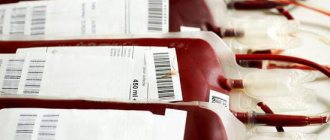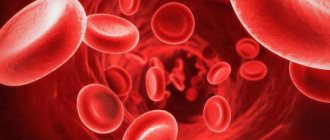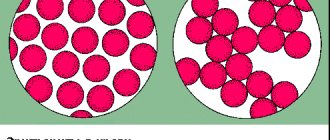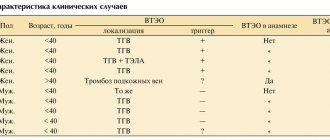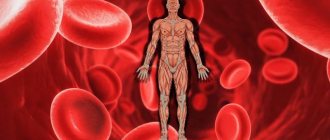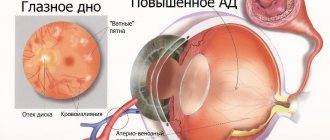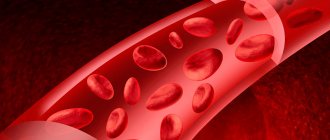Taking blood from a finger to analyze its composition is one of the most widely used diagnostic procedures that allows identifying various diseases at an early stage of development. To perform this, special devices, scarifiers, were previously used. One of their inherent disadvantages is the occurrence of painful sensations when the skin is pierced by the needle of the device. Today they have been replaced by more modern and convenient accessories - lancets. With their help, blood sampling is absolutely painless; the main thing is to know how to use it correctly.
Preparation rules
- To donate blood from a finger prick, you need to come to the laboratory in the morning (usually collection occurs from 7.30 to 10 o’clock).
- The test must be taken on an empty stomach, that is, you cannot eat in the morning, you can only drink plain water. The last meal should take place the night before - no later than 8-12 hours before the procedure.
- You can eat a day earlier, but it is recommended that a day or two before the analysis, in order to avoid getting distorted results, you should avoid fatty foods and alcoholic beverages.
- The day before, you should avoid physical and emotional stress.
- In the morning before the procedure, you should refrain from smoking.
Equipment for the procedure
To collect blood, disposable devices are used to pierce the ring finger. Such a device is called a scarifier. For children, lancets are used - an automatic, painless device with a plastic body. Due to the small needle, the analysis period will be no more than 10 seconds.
In addition, the following is used for analysis:
script async src="//pagead2.googlesyndication.com/pagead/js/adsbygoogle.js">
- Cotton wool.
- Iodine.
- Alcohol.
- Pipette.
- Gloves.
- Glass test tube.
General analysis
It can be shortened or expanded. The first option includes indicators such as the level of hemoglobin and all blood cells (erythrocytes, platelets, leukocytes), as well as ESR (erythrocyte sedimentation rate).
Capillary blood collection from a child
In a detailed analysis, other indicators are added, including:
- hematocrit;
- width of red cell distribution;
- average erythrocyte volume;
- average content of hemoglobin in the red cell;
- leukocyte formula and others.
Instructions for using Accu-Chek FastClix
How to use the lancet? To obtain a drop of blood you must:
- Conduct preliminary preparations. Wash your hands with warm water and soap and wipe dry. This promotes hygiene and better blood circulation. The puncture is made on the surface of the fingertips on the side, where there is minimal pain.
- Depth selection. There is a puncture depth regulator on the cap of the device. When using the device for the first time, set it to the mark with value 2. After that, check whether you did it correctly.
- Taking blood. Press the cocking button all the way. The readiness of the device for operation is determined by the yellow eye in the transparent window of the shutter button. Press the device against your fingertip and press the shutter button.
If a drop of blood does not form, increase the depth of the puncture and repeat the steps again.
Tools
Many people are concerned about their own safety during the test, so they may have questions about what is used to pierce and take blood. Today, almost all medical institutions have switched to using disposable finger pricking instruments. This tool is called a scarifier. It must be removed from the unopened package in front of the patient. It should be said that such a puncture is quite painful, so children really do not like the procedure.
Today, donating blood can be painless. A new device is being used more and more often when blood is taken. This is an automatic lancet in a plastic case. The needle quickly penetrates the skin, so pain is not felt. The new lancets have many advantages:
- the sterile needle or blade is located inside the body, which ensures the safety of patients and medical personnel;
- the reliability of the trigger mechanism eliminates accidental release of the needle or blade;
- reuse is eliminated thanks to the automatic return of the needle or blade;
- the shape of the needle ensures a reduced pain effect;
- the puncture is targeted, its depth is controlled;
- convenient body shape.
Main advantages
When using a scarifier to draw blood after a puncture, the healthcare worker squeezes the patient's finger to obtain the amount of biofluid necessary for analysis. In this case, blood appears on the surface of the skin and interacts with air, which can affect its composition and reduce the reliability of the data obtained. The use of a lancet allows you to avoid this, because the biomaterial immediately goes into a special reservoir. In addition, the emotional state of the patient, which also affects the composition of the blood, can distort the results, albeit slightly.
And this is not the only advantage of the modern device. Lancets have a number of other advantages:
- the needles used have minimal dimensions: 0.25-0.8 mm in diameter and 1.8 mm in length, so no hematomas remain at the puncture site, and a small wound heals in 1.5-2 hours, which is especially important when diagnosing diseases in newborns , infants;
- the absence of the human factor, such as hand trembling, excessive or insufficient physical effort, ensures rapid penetration, which reduces the time of the procedure and makes it painless;
- the sterility of lancets for blood collection is ensured by the presence of a sealed package, which is opened immediately before the start of the procedure in the presence of the patient, so the possibility of infection is absolutely excluded;
- The device is easy to use, it can be used not only by specialists, but also by ordinary consumers, which is especially important for people with diabetes who have to constantly monitor their blood sugar levels.
Not only children, but also many adults are frightened by the very sight of a medical scarifier. The use of a modern lancet does not cause such fear. The procedure is quick, painless and not accompanied by negative emotions.
Fence algorithm
To work, the laboratory assistant must prepare:
- sterile scarifier;
- cotton wool;
- alcohol;
- tincture of iodine;
- ether.
Disposable scarifier - a tool for pricking a finger
The algorithm and technique for taking are as follows:
- The patient sits opposite the laboratory assistant. The hand (usually the left) lies on the table.
- The puncture site is disinfected with alcohol and degreased with ether.
- Using a disposable scarifier, a puncture is quickly made in the pad of the ring finger, immersing the tool to the full depth of the cutting part (approximately 2-3 mm).
- The first drop of blood is removed using dry cotton wool.
- For the study, use the second and subsequent drops of blood, which are collected using a glass adapter, then placed in test tubes and signed.
- After the blood has been taken, the injection site is treated with alcohol or iodine and clamped with a cotton swab until the blood stops completely.
The algorithm for collecting capillary blood from a child is exactly the same as from an adult.
Varieties
Lancets have successfully become a replacement for scarifiers. The word itself has German roots, since in German the word "lanzette" comes from the French "lance", which means spear. A sharp needle can pierce the skin of a finger almost without pain. Each device has a removable cap to ensure it remains sterile.
Devices differ in appearance and can be automatic or universal. Their principle of operation and cost depend on this. There is a separate category of devices that are used in pediatrics.
Models for universal use
The main advantage of these products is that they can be used with all types of glucometers. The exception is Softclix devices, which can only be used in the Accu Chek Softlix lancing pen.
The great advantage of this type of product is the ability to regulate the depth of skin puncture using a piercing pen.
Regulation is carried out as follows:
- If the regulator is in position 1 or 2, this means that the device is used for children.
- Adjuster position 3 is suitable for women.
- The adjuster at position 4 or 5 is necessary for people with rougher skin.
Automatic
Thanks to innovative technologies, this type of device is the thinnest and sharpest, so the puncture of the skin is not felt at all. They are used when it is necessary to take blood from an adult or a small child.
Another convenience of automatic scarifiers is that they do not require any devices or special handles to use them; you just need to press on the head of the device.
Automatic lancing devices are expensive, so people with diabetes rarely have the opportunity to use them every day and prefer universal devices.
Lancing devices for children
Due to the high price, the use of such devices is limited, even though, due to their sharpness, they simply cannot cause any pain, psychological discomfort or suffering to the child. Therefore, many parents are inclined to think that switching to universal piercing devices would be a good alternative.
Why from the ring finger?
Perhaps someone is interested in which finger the blood is taken from and why. The sampling occurs from the ring finger, although it is allowed from the middle or index finger. A puncture, like any violation of the integrity of the skin, can lead to infection. The ring, index and middle fingers have an isolated inner membrane, so if penetration occurs, the infection will first be localized, which means there is time to eliminate it. The thumb and little finger are directly connected to the lining of the hand, and when infected, the infection spreads to the entire hand. The choice of the ring finger is explained by the fact that it bears the least physical load.
Price of needles for glucometer
The cost of lancets, like any product, is determined by the equipment and quality:
- Type of consumable;
- Number of needles in the set;
- Manufacturer's authority;
- Degree of modernization;
- Quality.
For this reason, packages of the same volume from different brands will differ in price. Of all the types, the most budget option is universal lancets. The pharmacy chain may offer a package of 25 pcs. or 200 pcs. For a box of the same size from a Polish manufacturer you will have to pay about 400 rubles, for a German manufacturer - from 500 rubles. If you focus on the pricing policy of pharmacies, then the cheapest option is online pharmacies and daytime inpatient pharmacies.
Automatic analogues will cost an order of magnitude more. Per box of 200 pcs. you need to pay from 1400 rubles. The quality of such lancets is always at its best, so the price does not depend on the manufacturer. The highest quality lancets are produced in the USA and Great Britain, Austria and Switzerland.
The quality of the lancet is an important point in the process of monitoring the glycemic profile. If measurements are taken carelessly, the risk of infection and complications increases many times over. Correction of nutrition and dosage of medications depend on the accuracy of the result. Today, purchasing lancets is not a problem; the main thing is to take their selection and use seriously.
What does the analysis show?
Taking blood from a finger is taken for preventive purposes, for diagnosis and treatment monitoring. This is a basic examination, and the main, most necessary characteristics for doctors that blood shows are the following:
- hemoglobin level;
- red blood cell level;
- ESR;
- leukocyte level;
- relative content of lymphocytes, monocytes, neutrophils, basophils, eosinophils.
Blood collection using an automatic lancet
Using clinical analysis, doctors can diagnose the following pathological conditions:
- leukemia;
- anemia;
- bleeding disorders;
- the presence of an infectious or inflammatory process in the body.
How often to change?
Manufacturers and endocrinologists emphasize the need to use each lancing device only once. This is because the needle is sterile before use. After its exposure and puncture, the surface is inseminated with microorganisms.
Automatic lancets are more reliable in this regard, since they change independently, preventing reuse. A person must change automatic needles themselves, but in order to save money, patients prefer to use the same device until it becomes dull. It must be remembered that this increases the risk of developing inflammatory and infectious processes with each subsequent puncture higher and higher.
Experts have come to a general consensus that in some cases it is acceptable to use one lancet per day, however, the presence of blood poisoning or infectious diseases is considered an absolute indication for replacing the needle after each procedure.
Interpretation of results
Deciphering should be carried out only by the attending physician. You should not try to do this yourself based on tables that indicate the norm for each indicator. The doctor evaluates the main parameters not only individually, but also in aggregate.
- Hemoglobin level. The norm for women is 120-140 g/liter, for men – 130-160 g/liter. If the content is higher than normal, dehydration, intestinal infections, and congenital heart disease are possible. A low level indicates anemia.
- CPU (color index). The norm is from 0.85 to 1.15%. Low values indicate anemia; elevated values are observed with folic acid deficiency and stomach cancer.
- Red blood cells. The norm for men is 4-5 g/l, for women – 3.7-4.7 g/l. An increase in level indicates renal pathologies, tumors, Cushing's syndrome. A slight excess of the norm can be observed with diarrhea, taking diuretics, and burns. Low levels indicate anemia, overhydration, and blood loss.
- ESR. The red cell sedimentation rate is an indicator of the level of plasma proteins. Normally, in women – up to 20 mm/hour, in men – up to 15 mm/hour. A high level is typical for inflammatory processes, infections, autoimmune diseases, intoxication, endocrine, renal and hepatic pathologies, and oncology. The reasons for the decrease are circulatory failure, hyperbilirubinemia, erythremia.
- Leukocytes. The norm of white cells is 4-9X10⁹/liter. The reasons for the decrease are cancer with secondary tumors in the brain, diffuse connective tissue diseases, typhoid fever, viral hepatitis, leukemia. Increased levels are observed in bacterial and fungal infections, acute inflammation, purulent infections, pneumonia, otitis media, pancreatitis, bronchitis, meningitis, and so on.
- Platelets. The normal content of blood platelets responsible for blood clotting is 180-320X10⁹/liter. High platelet counts indicate the development of rheumatoid arthritis, polycythemia, tuberculosis, and myeloid leukemia. A reduced content accompanies thrombocytopenic purpura, aplastic and hemolytic anemia, hemolytic disease, and lupus erythematosus.
Cost and operation
The price of piercers depends on a number of factors:
- manufacturer's company (devices made in Germany are considered the most expensive);
- number of lancets in the package;
- type of device (automatic lancing devices have an order of magnitude higher price than universal models);
- quality and modernization of products;
- policy of the pharmacy in which the implementation is carried out (daytime pharmacies have lower prices than 24-hour pharmacies).
Selection of piercers - selection according to individual needs and characteristics
For example, a package of 200 universal-type needles can cost between 300-700 rubles, the same package of “automatic machines” will cost the buyer 1400-1800 rubles.
The operation of the puncture device must take into account the following features:
- one-time use (you should still try to comply with this point);
- according to storage conditions, lancets should be at room temperature without critical changes;
- needles should not be exposed to liquid, steam, or direct sunlight;
- It is prohibited to use lancets that have expired.
Following the rules prevents errors from occurring when measuring blood glucose levels.
Famous models
The main brands in demand on the scarifier market are the following models:
- Microlet lancets . The products are manufactured specifically to work with the Kontur TS glucometer. The handle is made of medical steel, the distinctive features of which are reliability and safety in use. The products are sterile thanks to the available protection caps. The needles for this device are universal, so they are suitable for the Satellite Express, Aychek and other budget models.
- Medlant plus . The products are ideal for testing with modern analyzers that work with small volumes of blood. The depth of invasion provided by the device is 1.5 mm. Blood is drawn by tightly attaching the device to the surface of the skin on the finger; inclusion in the process occurs automatically. Lancets produced under this brand are color coded, which makes it possible to choose the volume to suit your skin thickness. Absolutely any part of the body is suitable for analysis.
- Accu Chek . The products are produced by a Russian manufacturer and are suitable for various device models. All types of lancets are treated with silicone, which ensures sterility and safety of testing.
- IME-DC . This type of configuration is present in almost all automatic analogues. These are lancets with the minimum acceptable diameter, which is convenient for testing glycemia in children. Products are manufactured in Germany. They have a spear-shaped sharpening, a cross-shaped base, and the main production material is medical durable steel.
- Prolance . Products from a Chinese company are produced in 6 different models, differing in thickness and puncture depth. Sterile conditions during analysis are ensured thanks to the installed protective cap on each needle.
- Droplet . Lancets can be used not only with various devices, but also independently. The needle is closed on the outside with a polymer capsule, made of special polished steel by a Polish company. The model is not compatible with the Accu Chek Softclix device.
- One touch . This company develops needles for the Van Touch Select glucometer. They belong to the category of universal consumables, so they can be used with other pens designed for piercing the surface of the skin (for example, Satellite Plus, Microlet, Satellite Express).
It is important to understand that measurements at home must be carried out with special attention, compliance with all recommendations and responsibility. These rules apply to all types of glucometers and consumables necessary for the study.
The results obtained allow us to understand changes in glycemic levels and analyze the reasons that led to data deviations from the norm. Otherwise, incorrect actions can distort the indicator and produce incorrect values that can complicate the patient’s therapy.
